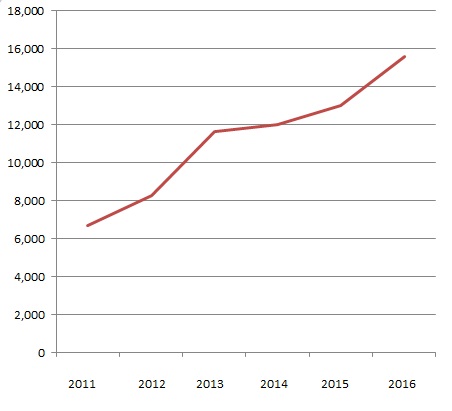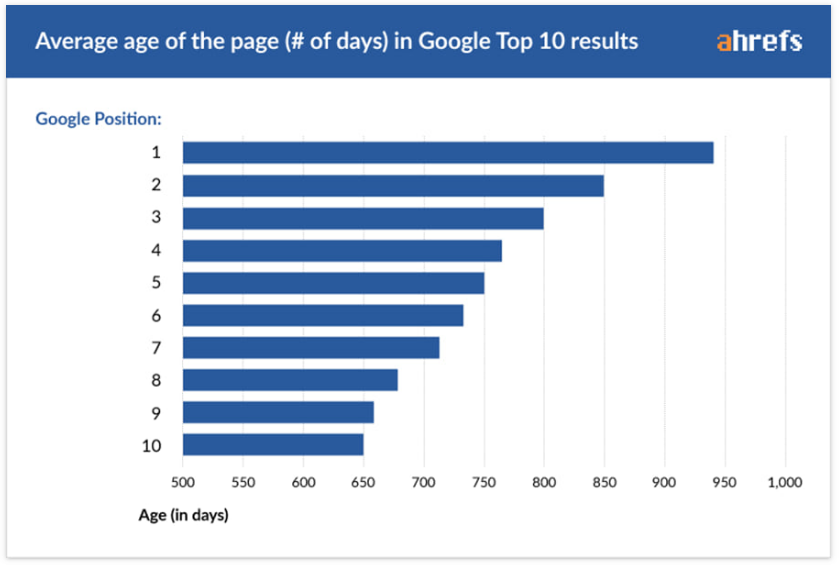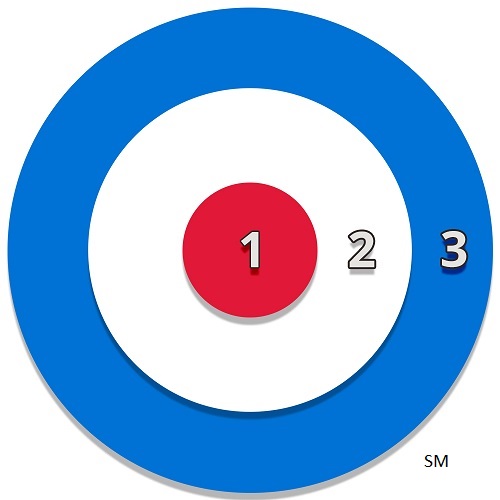Not Inbound, Not Outbound, but Bullseye Marketing
The inbound versus outbound marketing dichotomy is becoming tired, and increasingly useless. We need a new approach to demand generation, and building leads and sales. I call that new approach Bullseye Marketing, which I describe below.
But, first, what’s wrong with inbound and outbound?
For inbound, let’s look at HubSpot itself as an example. HubSpot co-founder and CEO Brian Halligan created inbound marketing about a dozen years ago as a variation of Seth Godin’s permission marketing. Inbound is so closely identified with HubSpot that the company’s annual conference is called “Inbound”, and they talk of the “inbound movement”.
Inbound marketing aims to attract people to a company or product through useful or entertaining content – rather than “interrupting” their online experience with outbound ads – and to then nurture the relationship with emails and additional content that the customer has agreed to receive. Marketers with deep inbound experience will tell you that the leads produced with inbound usually close at a higher rate than outbound leads.
In its early days, HubSpot used to say, “If you have more money than brains, use outbound marketing. If you have more brains than money, use inbound marketing.” But that was before HubSpot spent hundreds of millions of dollars on their own increasingly-inefficient inbound marketing. How can we measure that in inefficiency?
In 2014, HubSpot wrote in its annual report, “We believe that that customer acquisition cost, or CAC, is an indicator of the efficiency of our sales and marketing programs in acquiring new customers.” But, as I wrote last year, in just a few years the HubSpot customer acquisition cost – or the average cost of a new customer –has more than doubled.

In 2017, HubSpot spent $212M out of a $340M budget — over 60% — on sales and marketing. That’s a MUCH higher percentage than most companies spend, could spend, or have to spend. And, relying mostly on inbound leads, HubSpot needs 300-400 new contacts to close a single new customer. That’s not unusual for large, inbound programs, but few small- and midsized companies are prepared for or willing to do that.
Why has inbound become so inefficient?
A major reason is because search engine marketing has become virtually winner-take-all.
It’s well known that the majority of organic search clicks happen on the first three links on Google page one search results. But it’s not always understood just how hard it’s become, in most industries, to achieve those lofty rankings.
Ahrefs reported last year that only five percent of new content even makes it to page one search results in Google within a year, let alone into one of the top three positions. It typically takes two to three years for a post to rise to a top position.
And the top links usually belong to sites with considerable domain authority.

Moz founder and SEO expert Rand Fishkin wrote earlier this month that “the future of SEO has never been clearer (nor more ignored)”. One of his six key points was “Less opportunities for small sites and emerging companies as a few big players dominate an ever-increasing share of Google’s top results.”
And the rise of voice search, which delivers one result, just accelerates this trend
So unless you’re in one of those few industries in which very, very little content has been produced, the idea that you’ll create a few blog posts, videos, or infographics, get them high on page one search results, and generate meaningful traffic that produces lots of inbound leads, is simply outdated. You have to become a content factory to produce meaningful results – something that HubSpot did but it cost them, and continues to cost them, huge sums.
Inbound may be increasingly inefficient, but outbound marketing has always been inefficient. Primary tactics include advertising, direct mail, spam emails that a person has not asked to receive, and telesales.
Click-through rates on online ads are about .05%. Do Not Call lists and caller ID make it harder and harder to reach customers by phone – and they’re rarely happy to get the call if you do get through. Perhaps one or two percent of cold calls result in a meeting or sale. And so on: you know the drill.
And the inbound/outbound dichotomy is increasingly useless. Once released from their obligation to promote the inbound approach, even former HubSpot executives will tell you that companies need to use both.
So if inbound and outbound are both becoming increasingly inefficient – and the dichotomy is increasingly irrelevant — what’s the alternative?
Bullseye Marketing
Bullseye Marketing is the low-risk, low-cost, three-phase approach that companies can use to launch and scale successful marketing programs that actually drive business results.

Phase 1: Fully Exploit Your Existing Marketing Assets
Most companies that have been around for a few years have considerable marketing assets, but they are rarely aware of them or taking full advantage of them. These assets, and how to exploit them, include:
Customers
- Gain a better understanding of customers and their needs through listening conversations so that you’re offering them the best products and services and your marketing activities can be as effective as possible.
- Market and sell more to your existing customers. It’s estimated that it’s five to 25 times more expensive to close a new account than to retain and grow an existing one, yet in many companies a much greater emphasis is put on closing new accounts.
Website
- On most websites 99.9% of visitors come and go without anyone knowing who they are or what they are interested in. With Bullseye Marketing you sharpen your message and provide calls to actions to induce visitors to start to interact with your company.
- You also improve your conversion rates so more website visitors take advantage of those calls to action. It’s a lot faster and cheaper to double the rate of conversions from people already coming to a website than to double the number of visitors.
- Email marketing is the 800-pound gorilla of digital marketing. Consulting firm McKinsey & Company estimates that email marketing is 40 times more effective for customer acquisition than Facebook and Twitter. And marketers routinely describe it as the digital channel with the highest ROI. Bullseye marketers don’t buy lists or spam people; we grow and use a house list to provide useful information that contacts, prospects, and customers value. (BTW, that McKinsey piece is from 2014 but, if anything, things have gotten worse for brands on social media since then because the platforms increasingly suppress the posts of brands. Five years ago a brand’s posts on Facebook or Twitter may have been seen by 25% or so of their followers; today it’s more like two percent. These platforms want you to pay to show their posts.)
Remarketing
- Remarketing ads are those ads that follow you around the Internet after you’ve looked at a website. Love them or hate them, remarketing is inexpensive and effective because you’re only targeting people who have enough interest in you to have recently visited your website.
The Sales Team
- In Bullseye Marketing you put a premium on working more closely with sales to better understand customers, grow current accounts, generate leads, and close new accounts.
- Account based marketing (or, as it’s sometimes called, target account marketing) is an important Bullseye tactic that requires very close collaboration between marketing and sales.
These Phase 1 Bullseye Marketing Programs can typically start producing results in just a few weeks or months. Except for staff and management time they are very inexpensive – usually free – and so very low risk. They provide a path to quick wins that can build the internal buy-in for Phase 2 and 3 programs.
And they’re foundational: a company that jumps to Phase 2 and 3 programs without first getting Phase 1 right is trying to fill a bucket that’s full of holes.
Phase 2: Sell to People Who Want to Buy Now
A person who just bought a car is unlikely to buy another for several years, just as a company that just had its website redone probably won’t do it again for another four years or so. On the other hand, people buy groceries every week and clothes many times a year.
Targeting your marketing to customers who are in-market now is critical to marketing efficiency and success.
- Search ads are one way to do this. The vast majority of people, whether shopping for themselves or for the company that they work at, search early in their buying process. By initially focusing on the keyword phrases that suggest strong buying intent, marketers can hone in on those most likely to buy soon.
- A surge of people from a company visiting a vendor’s website, reading the vendor’s emails, and downloading their content suggests much stronger buying intent at that company; marketing and sales should target and follow up with them.
- Some third-party vendors aggregate search data from many websites to identify the companies that are in market for particular products now and sell that list to vendors.
All of these are ways of taking advantage of intent data to identify people and companies that are in market now and then hyper focus your sales and marketing on closing that new business.
Phase 3: Cast a Wider Net
In the outer ring of Bullseye Marketing we use programs like social media, content marketing, and display ads to build our brand and awareness. In the long run these can contribute greatly to the success of our marketing programs, but they are unlikely to produce measurable results for the first year or two (unless done as part of a large scale, very expensive program). So they are, initially, a low priority.
These long-term programs can ultimately have great value. Companies with strong brands elicit greater brand loyalty. They generate inbound leads, and customers are often willing to pay more (like $1,000 for a phone). But they are not the place to start.
Unfortunately, programs like social media and content marketing are virtually the definition of “marketing” in many people’s minds. So companies new to marketing may begin with these programs, see no results and, after six months or so say, “We knew marketing doesn’t work for us” and stop.
But it could work, if they used the Bullseye Marketing approach.
Clearly, companies that already have a large, omni channel marketing program in place don’t need Bullseye Marketing. But for the 80-plus percent of companies that don’t have that, Bullseye Marketing provides a low-risk on-ramp to faster business growth.
I provide a much-deeper dive on Bullseye Marketing – with hundreds of tips, best practices, and full-color examples — in my book of that name that you can buy on Amazon.
